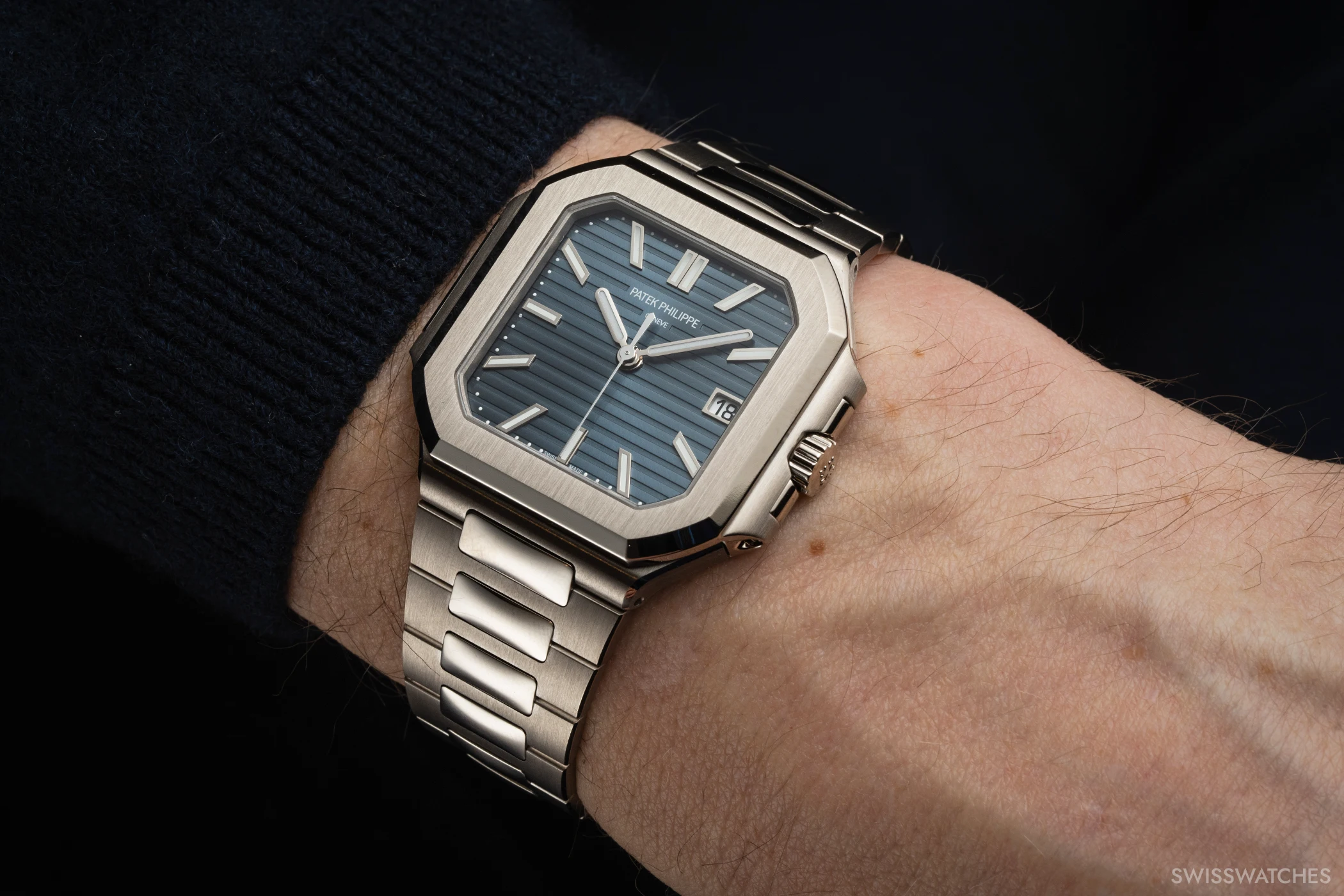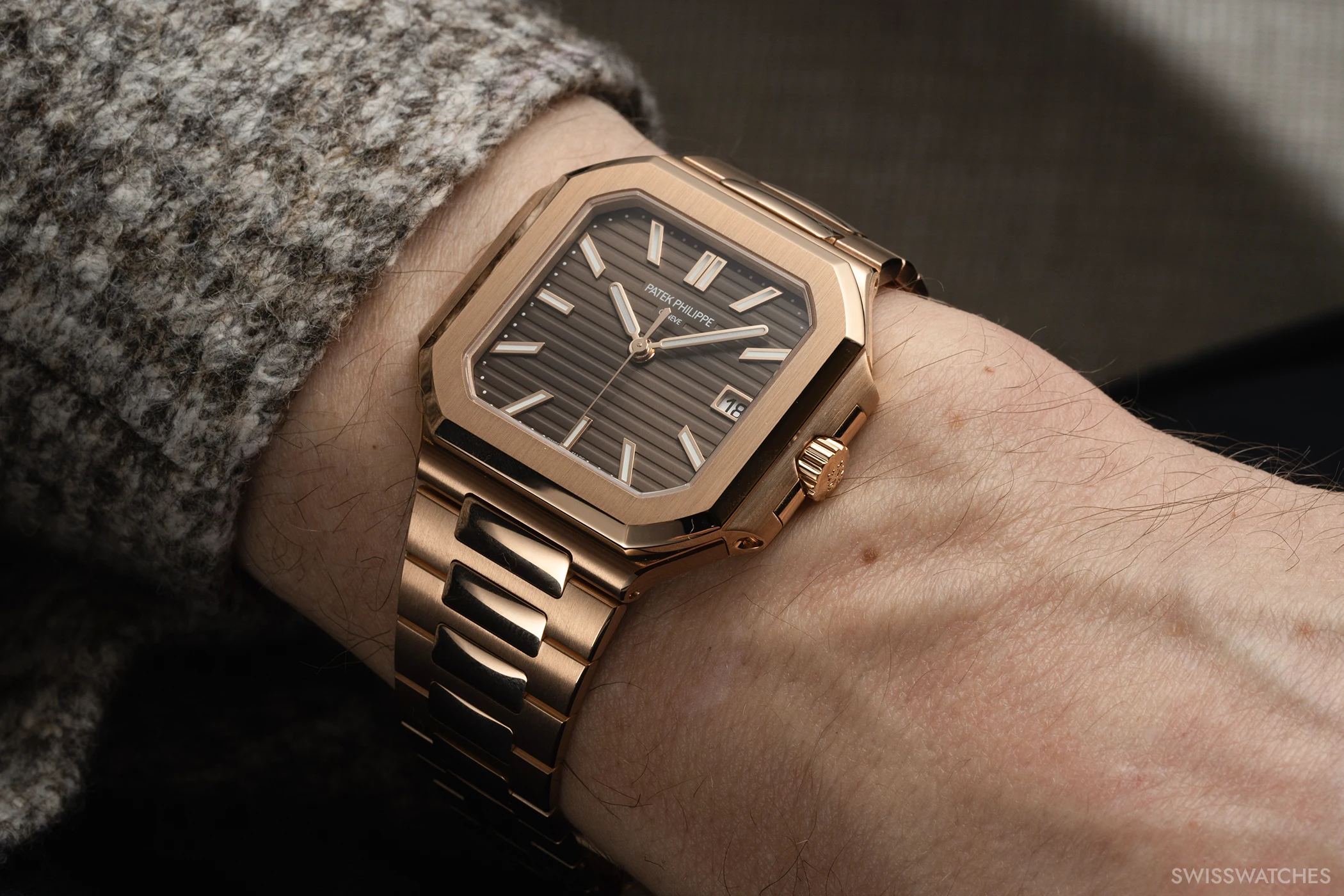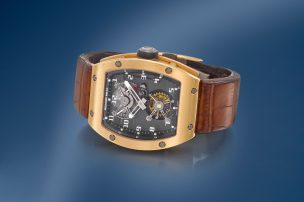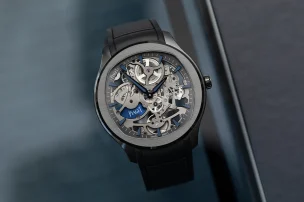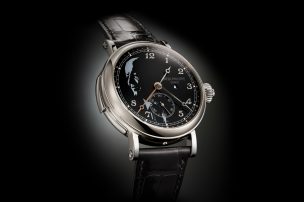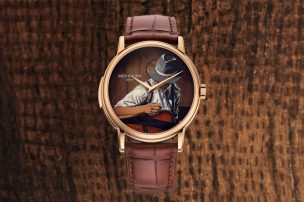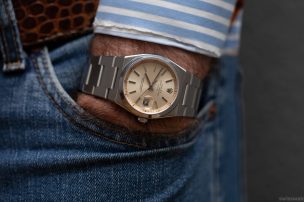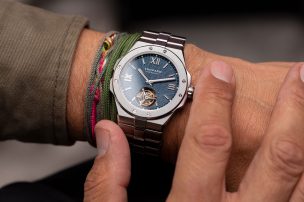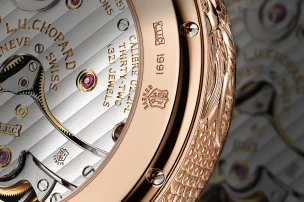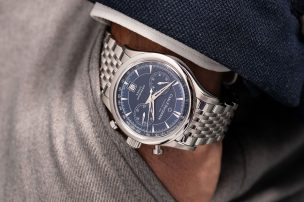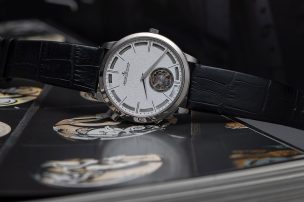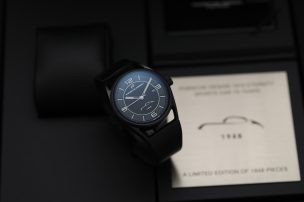

Patek Philippe Novelties: One Collection, Many Highlights
The Greek philosopher Heraclitus is credited with the observation that nothing is as constant as change. This thought resonates when looking at the new products presented by Patek Philippe. Because what Thierry Stern is presenting at Watches & Wonders is three hundred percent in the Patek Philippe tradition, and at the same time demonstrates a willingness for constant change and bold decisions. The Cubitus collection, launched just last autumn, is being expanded, the Nautilus collection is getting new variants, and the Calatrava collection is being extended with an instantaneous display of the date and day of the week, including a generous power reserve.
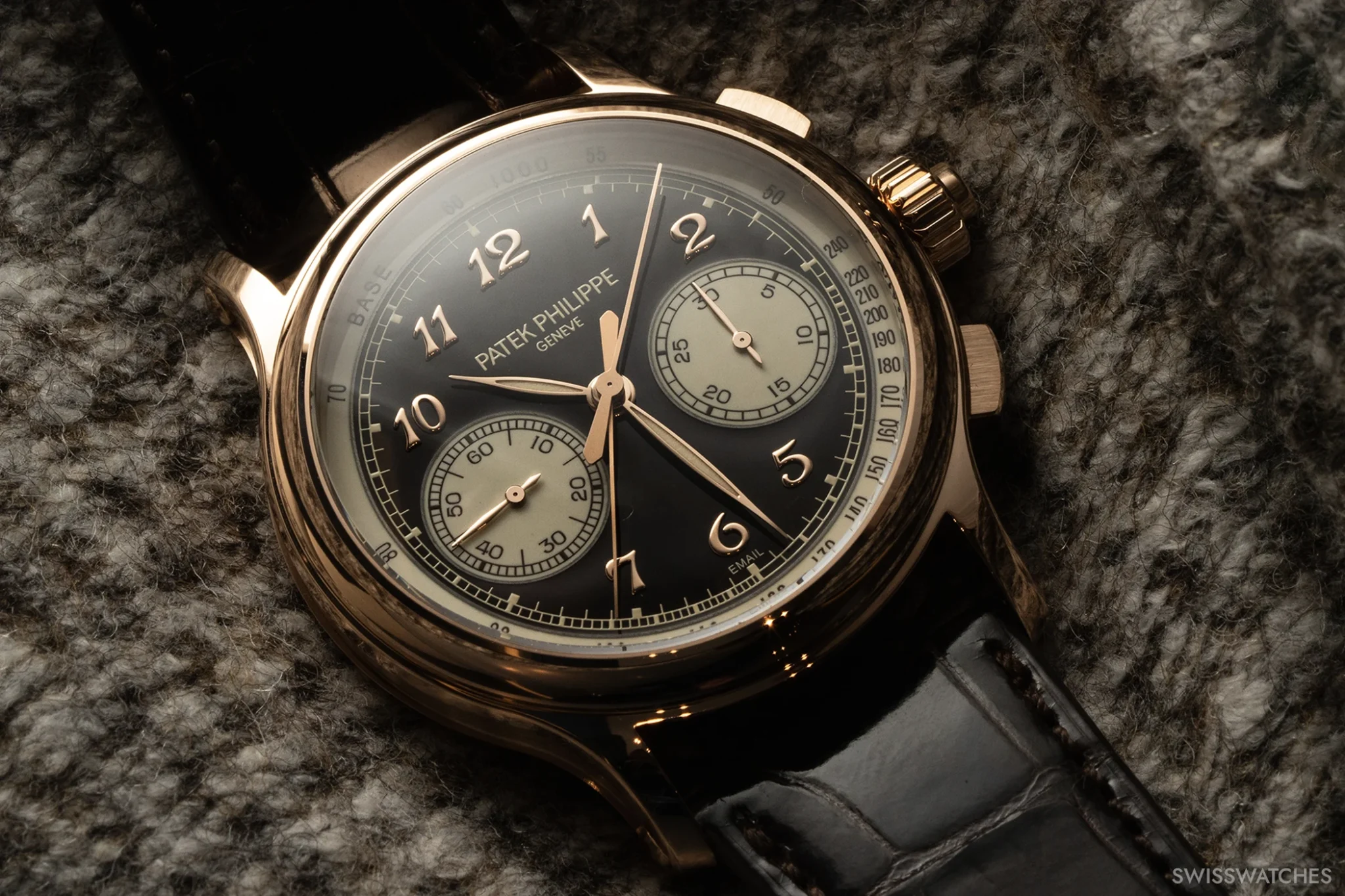
There are also new additions to the Grand Complications range, which are sure to be coveted by the most dedicated of collectors. 15 new references – the sheer variety of new products in a wide range of segments is certainly impressive, and is undoubtedly unique. The new references also show how the company’s more recent design codes are being consolidated. What not so long ago appeared to be new, unusual or at least solitary within the collection can now be found in different variations. Daring becomes consistency, and today’s novelties become tomorrow’s classics. Or do they? Here is a look at the most important new references.
Eight-day power reserve: Reference 5238G-001
The grainy structure of the dial, the 41 mm case with its flanks in the Clous de Paris pattern, the numerals and the ‘syringe’ hands: visually speaking, the new model is very similar to the Calatrava Travel Time with annual calendar, Ref. 5326. At the same time, the deep blue dial gives the white-gold watch a completely different, more elegant look. Above all: with its power reserve of eight days, it is a completely independent watch. It houses the new calibre 31 505 8J PS IRM CI J. The movement, which integrates the Pulsomax escapement with lever and a Silinvar escape wheel, is the result of the ‘Advanced Research’ programme, through which Patek Philippe explores technical innovations. Two barrels provide the hand-wound calibre with the power to work precisely for 192 hours, and there is even room for a ninth ‘reserve day’ for a further 24 hours on the display at twelve o’clock.
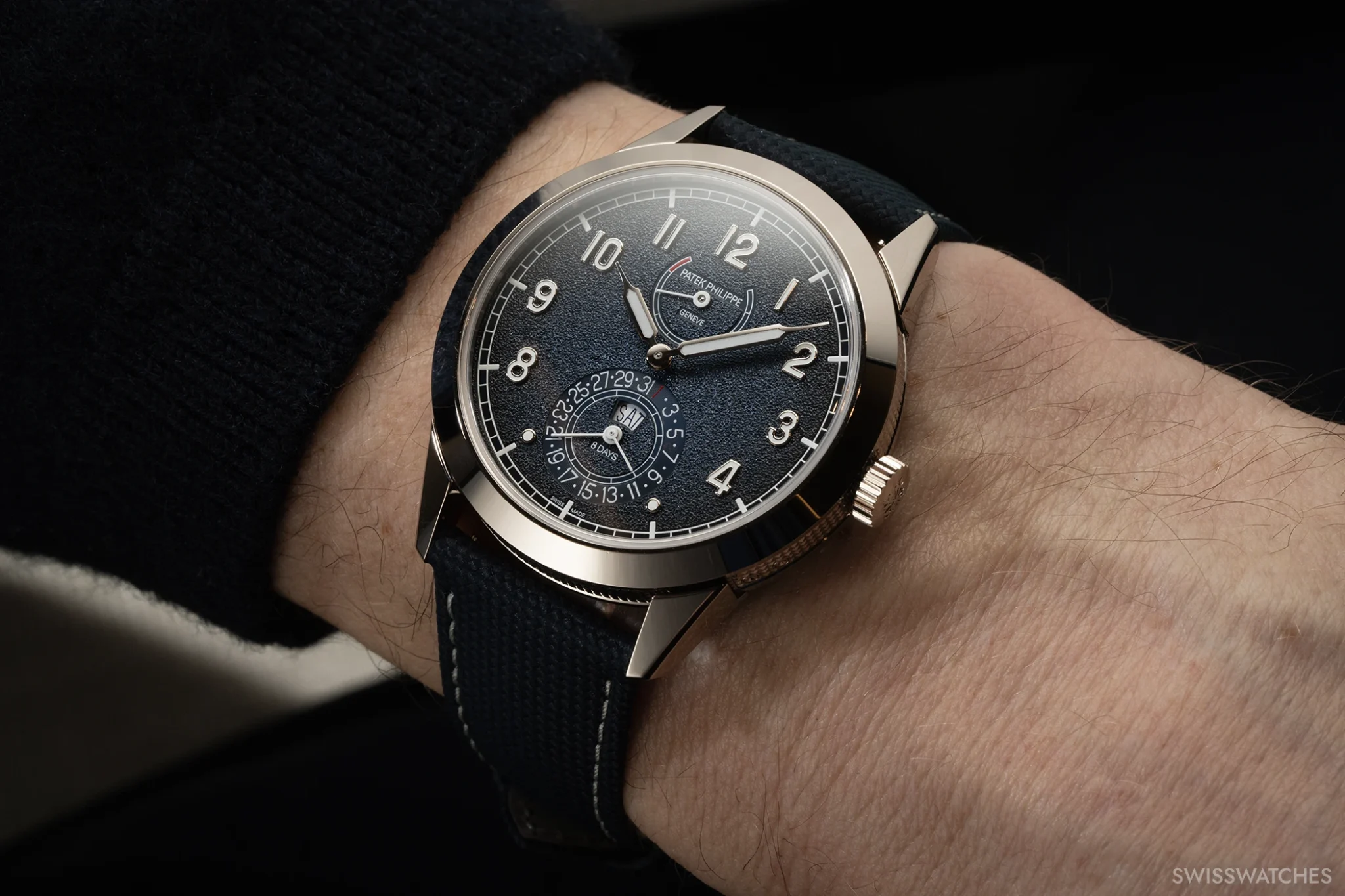
The day of the week and date are displayed at six o’clock and change instantly at midnight – a complication that will only rarely be observed by its owners, but which nevertheless has a marvellous effect. The price for this novelty: 69,530 euros.
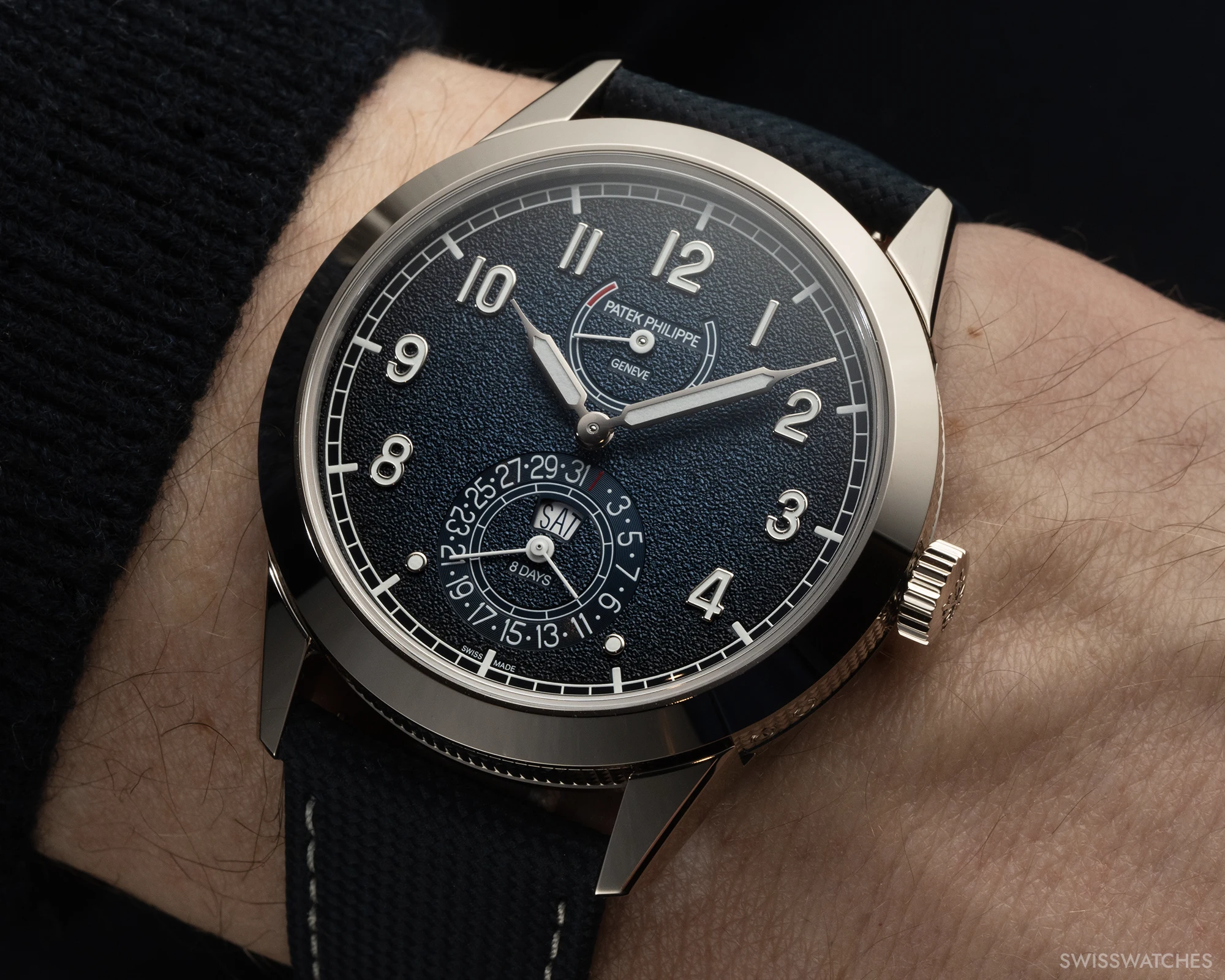
Some people will point out that other manufacturers have been producing timepieces with similar power reserves for some time. However, a look inside the movement reveals the outstanding and very unique quality of the new calibre, with this complication that was previously unusual for Patek Philippe. That is precisely what makes this reference so special: it demonstrates the adaptability and expandability of the Calatrava collection, which is so familiar, yet never old-fashioned, but always surprising.
Metallised sapphire crystal, round two: Reference 6159G
Tastes differ, and there is always a fair amount of subjectivity involved in the judgement of timepieces, but I will allow myself to say this: this reference is the most beautiful of the new models. The sight of the sapphire crystal dial with grey metallisation and black gradient is already familiar to friends of the manufacture from the reference 5316/50P launched in 2023 in a bluish version, which features a minute repeater with tourbillon and perpetual calendar with retrograde date display. According to reports, this ‘Grande Complication’ is highly sought after by the Stern family’s top customers. In this respect, it is only understandable that this dial should also be used on a somewhat less complex and therefore less expensive model. Which begs the question: what do owners of a 5316 think of the similarity with the 6159? Given both share the perpetual calendar complication with retrograde date display, their appearance is very similar despite their different colour tones.
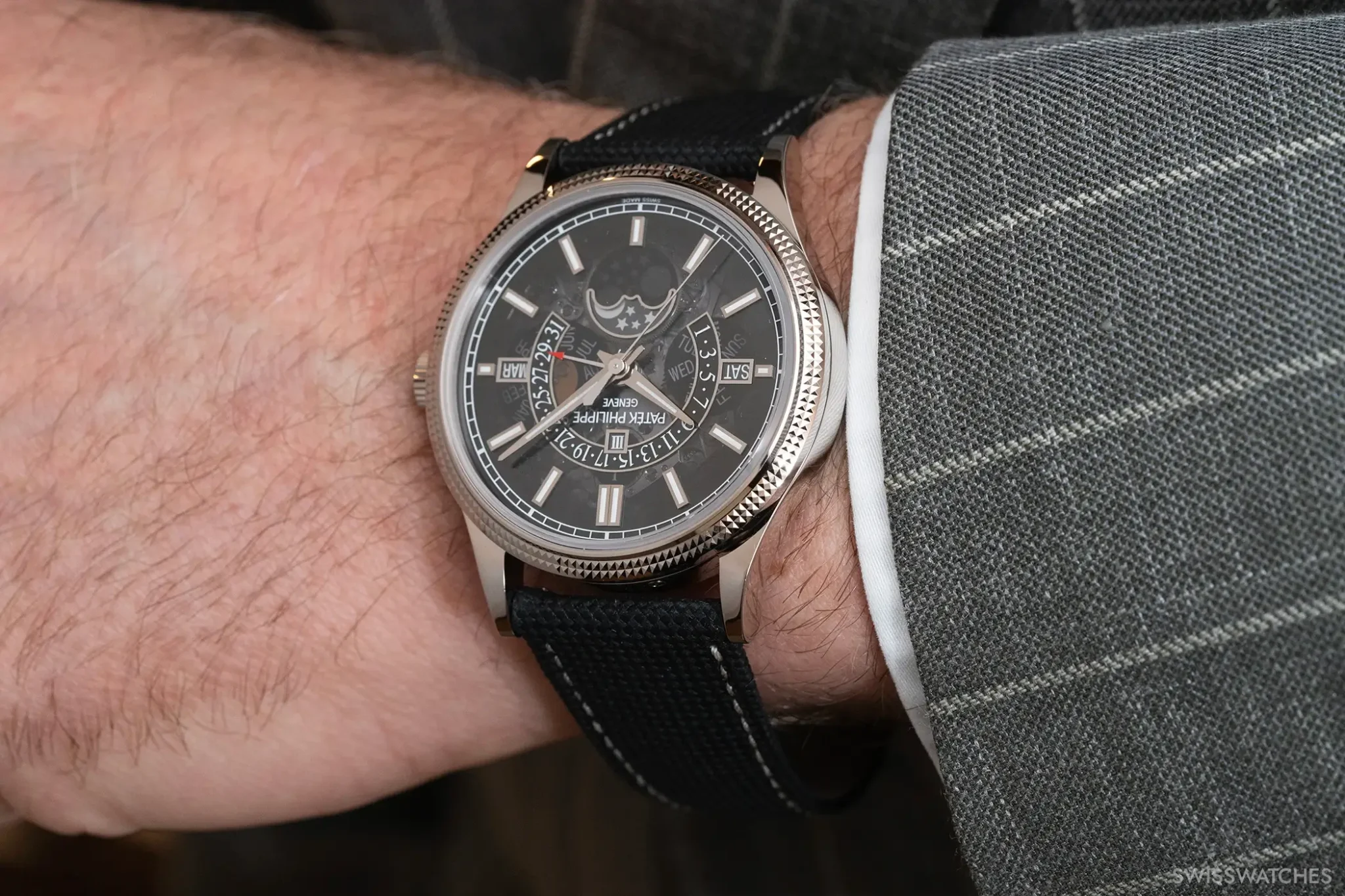
At first glance, the main difference is a bezel with a Clous de Paris pattern, which gives the grey dial a spectacular frame and makes the 39.5-mm watch look slightly larger. Both create a fascinating interplay of light and shadow; as an observer, you are inevitably tempted to look behind the tinted glass with its black gradient, and it takes a certain amount of concentration to focus on the essential elements of the perpetual calendar: the reset date display and the frames of the three windows for the day of the week, month and leap year cycle, as well as the moonphase at six o’clock.
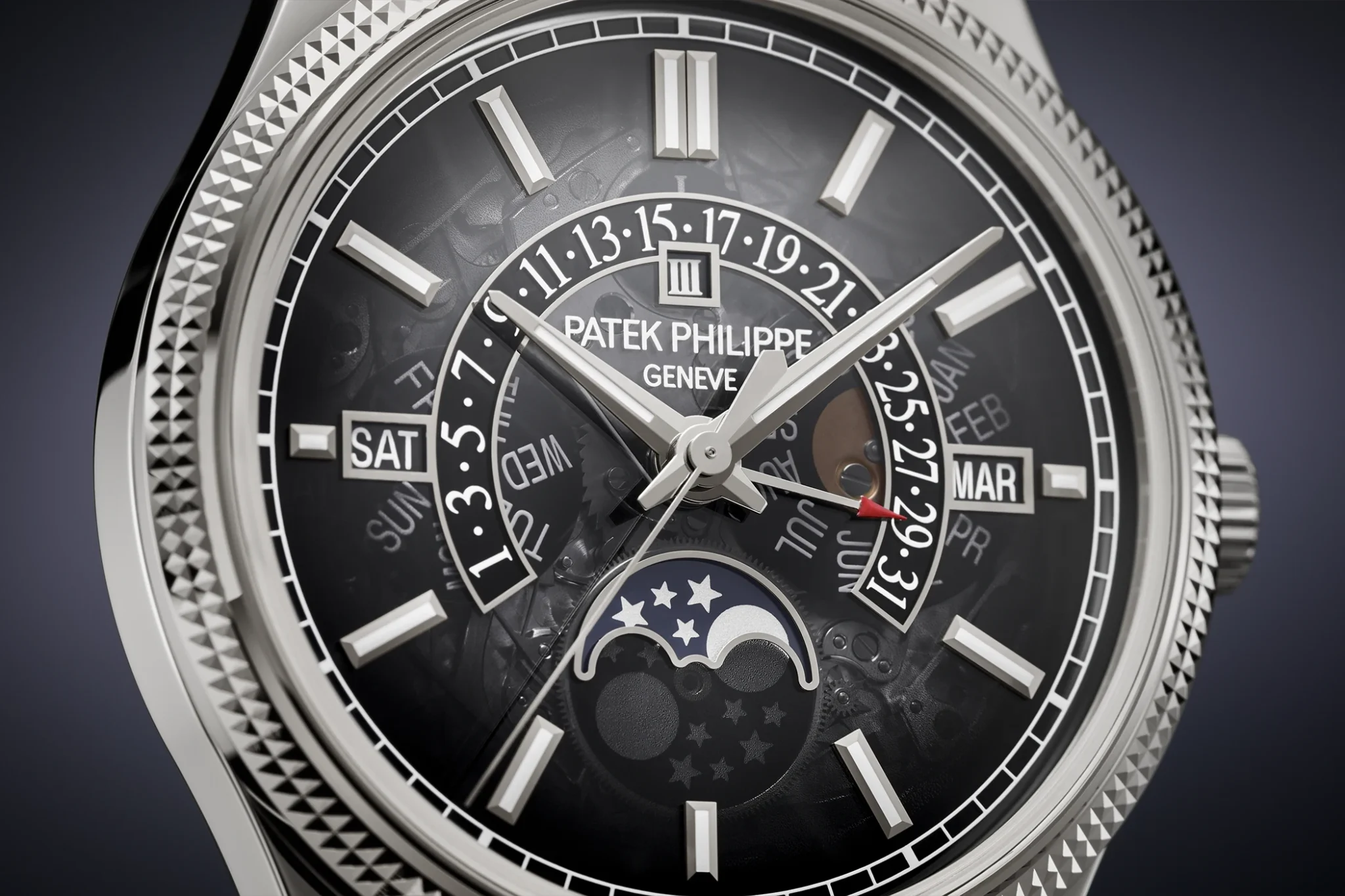

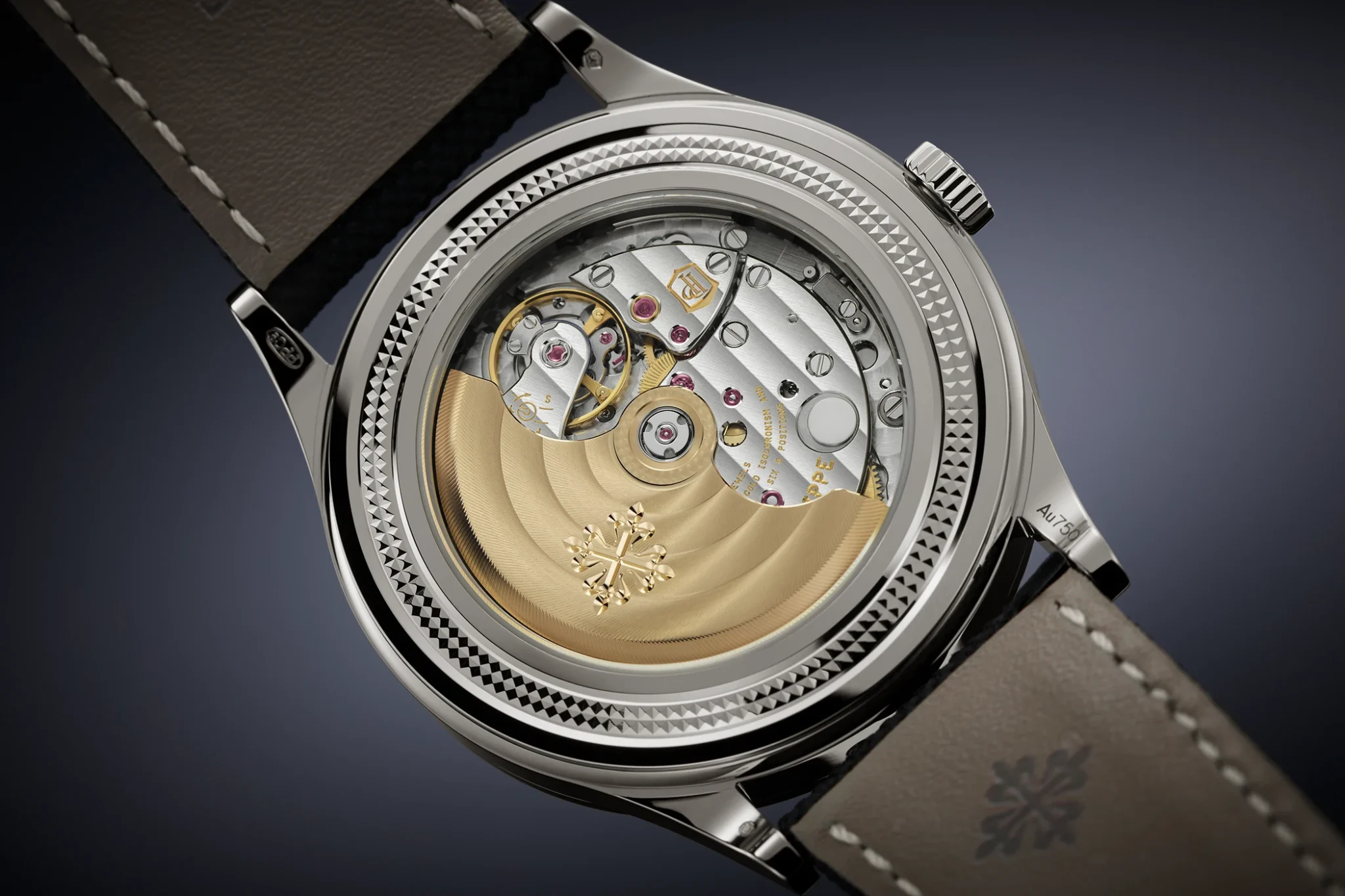
The calibre 26 330 S QR used is familiar from the reference 5160, which has a completely different appearance with its artisanal, classic design. With its mix of classic elements such as the Clous de Paris guilloché pattern on the bezel and caseback on the one hand, and modern accents such as the sapphire crystal dial and the red arrow on the date display on the other, this perpetual calendar represents a new generation of ‘Grandes Complications’ and is sure to be in high demand. Its price: 115,880 euros.
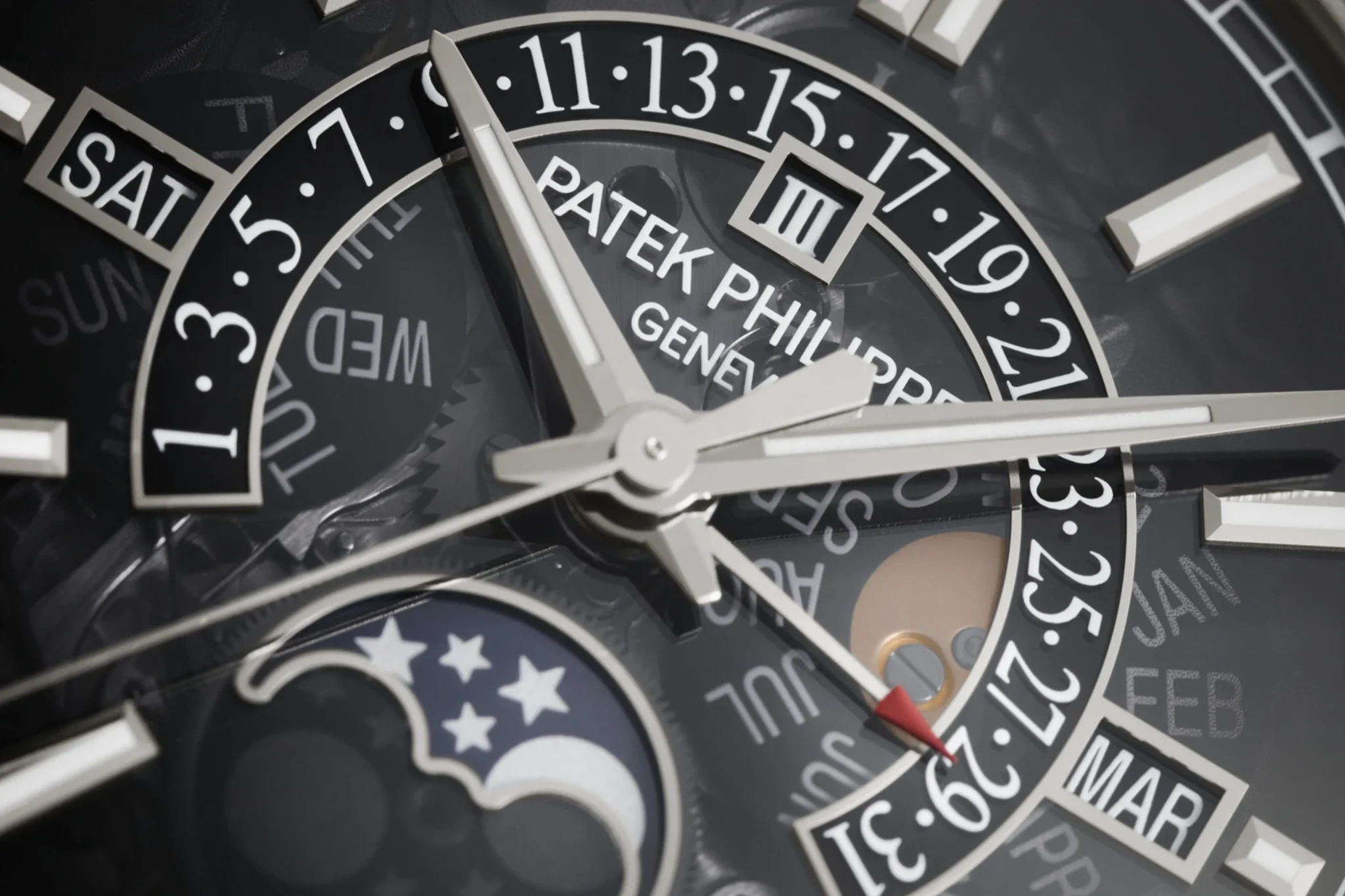
Change of power at the top: Reference 5308G-001
Strictly speaking, it is not a completely new watch, yet it symbolises nothing less than a generational change in a sphere that only very few collectors will ever reach. The 5308G-001 finally replaces the predecessor reference 5208. Since the premiere of the 5308 at Patek Philippe’s ‘Grand Exhibition’ in Tokyo, this was ultimately only a matter of time: At that time – not quite two years ago – there was a first limited edition of 15 pieces of this ‘quadruple complication’, the minute repeater with instantaneous perpetual calendar, split-seconds function and chronograph. The additional split-seconds function is the main difference to the reference 5208.
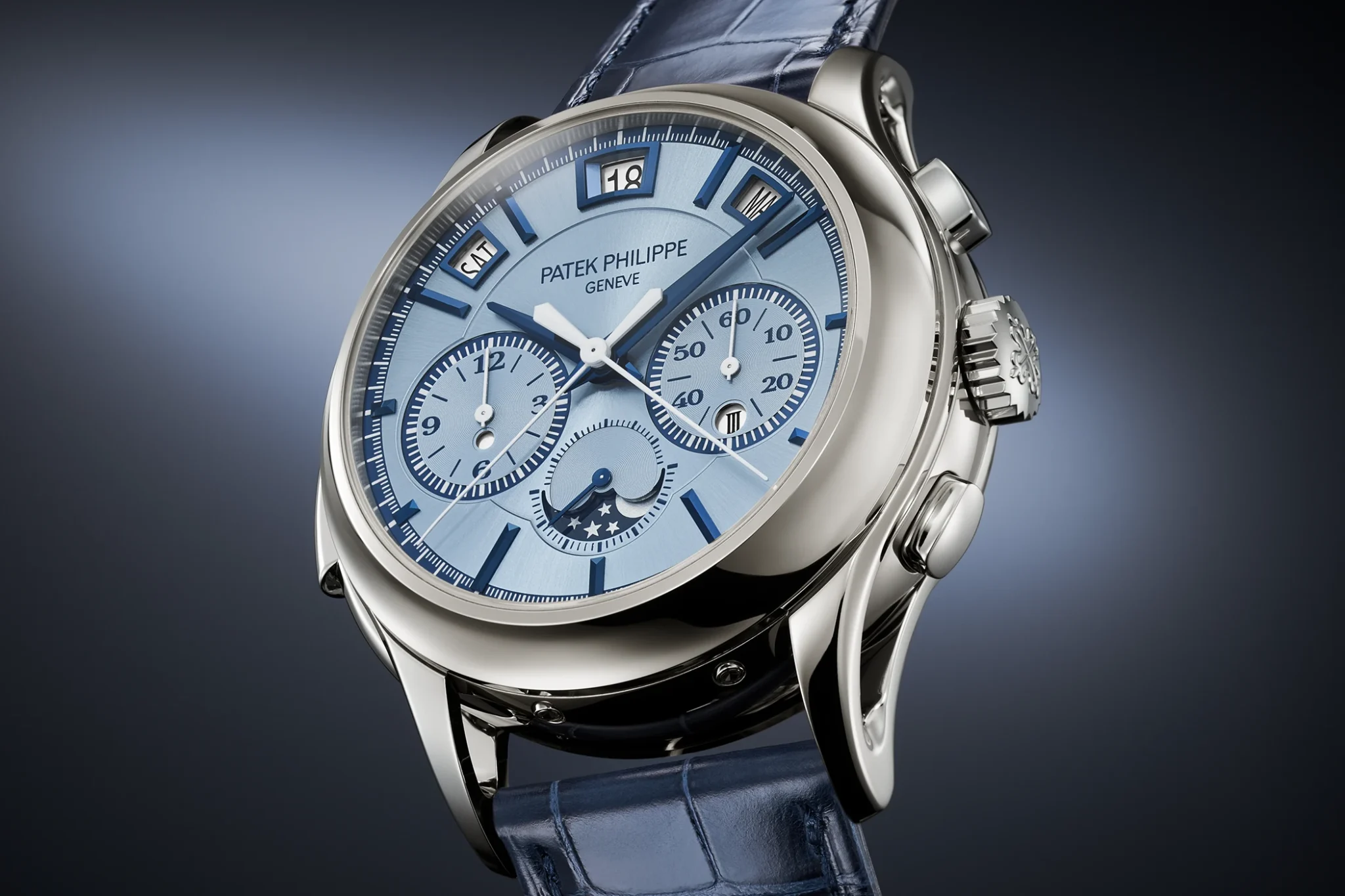
While the Tokyo edition was still made of platinum and had a salmon-coloured dial, the case of the timepiece now presented is made of white gold, while the dial is ice blue. With its cool appearance, the effect is anything but restrained. Thierry Stern is known to be bold and decisive, which is why he does not shy away from strong colours even in the manufacture’s most valuable models. Conservative collectors may find this choice of colour somewhat disconcerting, or at least surprising, but this energetic look is likely to do justice to global taste and the spirit of the times.
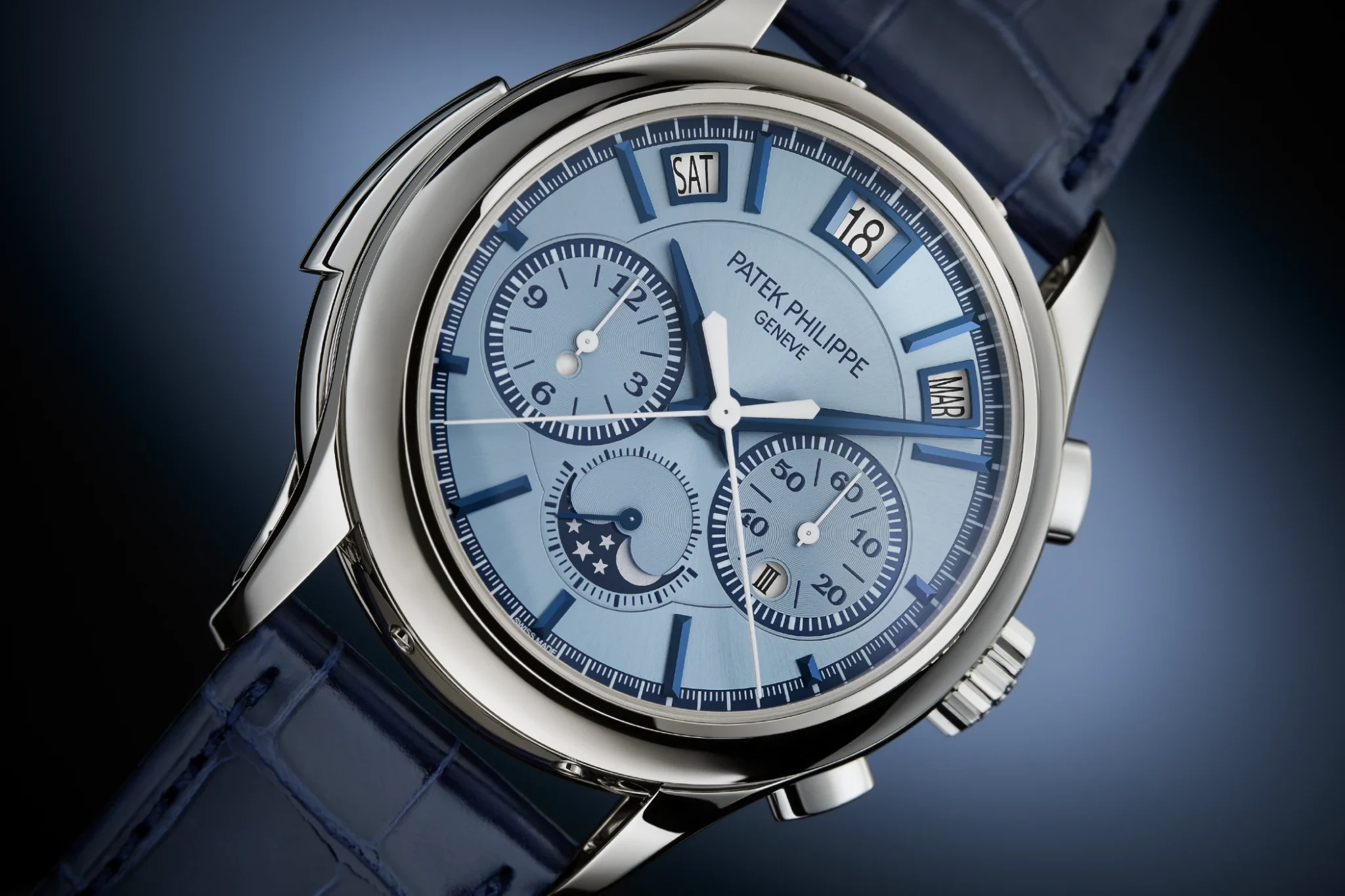
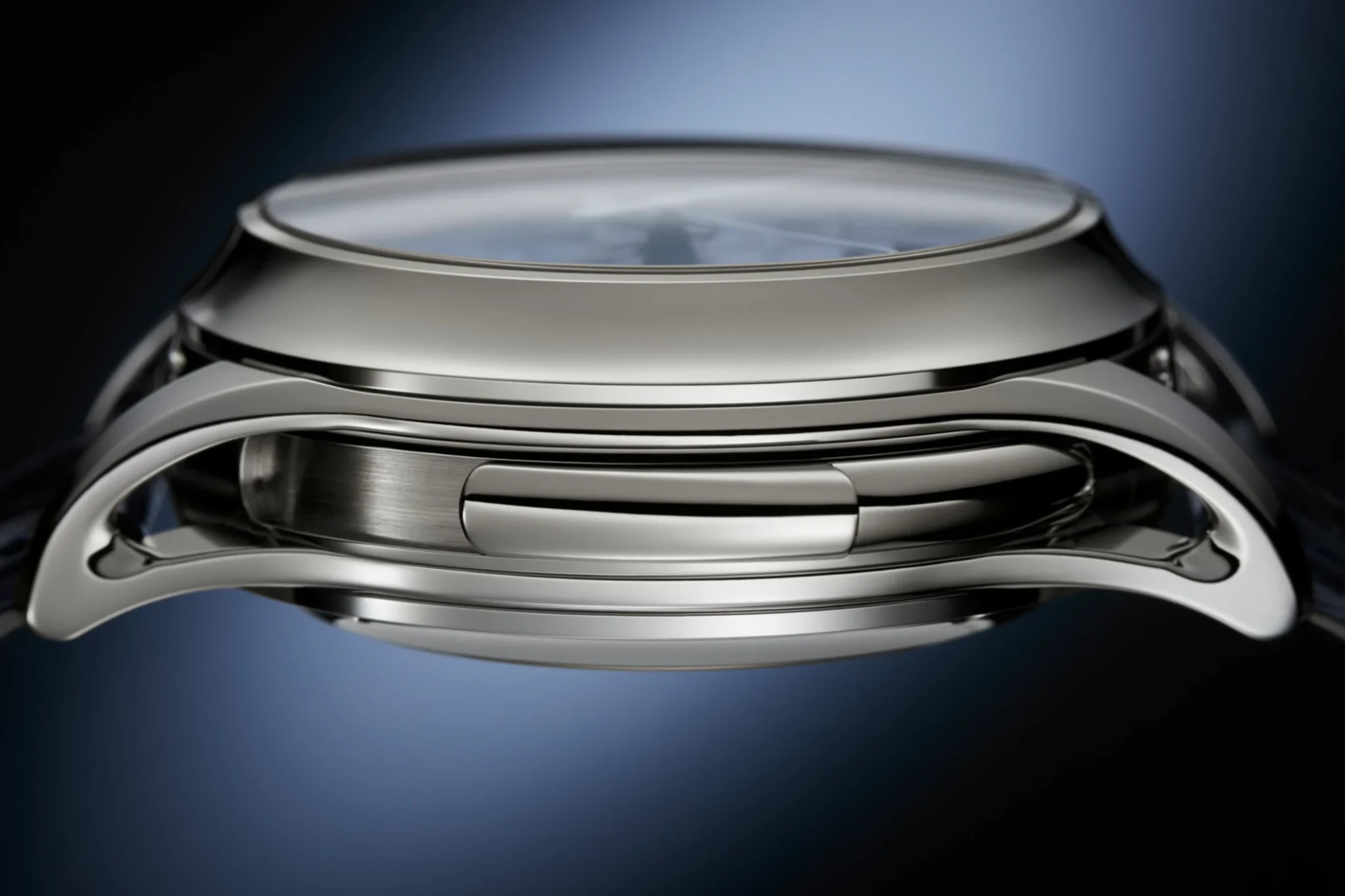
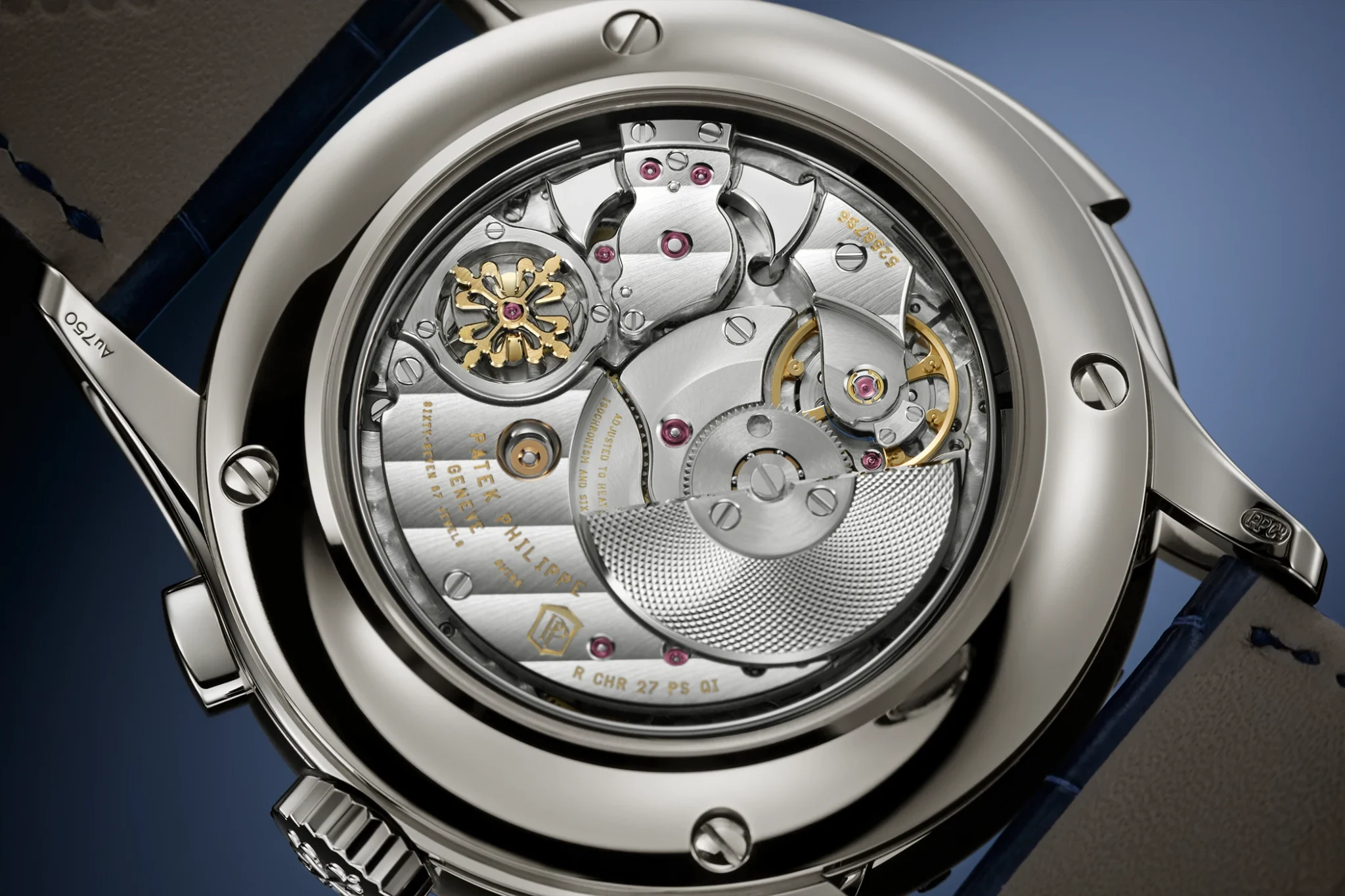
With a diameter of 42 mm and a height of 17.71 mm, this reference is by no means a small watch, but it is extremely wearable compared to the other ultra-complex models. Especially as the volume is good for the fine sound of the minute repeater, and fits the character of a chronograph. The value of this novelty, which in light of the small number of pieces can hardly be described as a ‘series model’ of the company, and which only the most faithful customers of the company may be able to purchase: 1,216,710 euros.
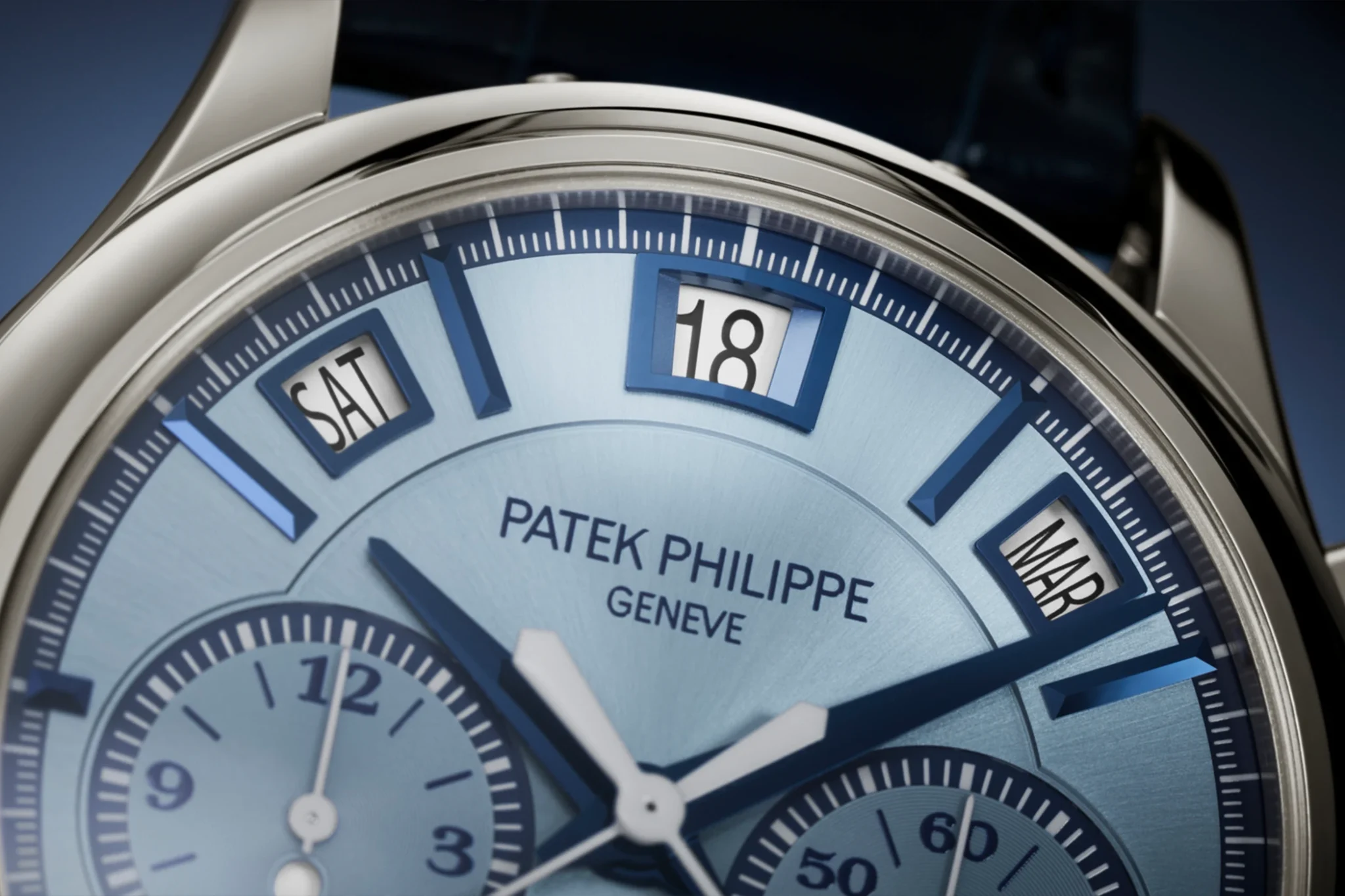
Ladies’ choice? The Cubitus references 7128/1G-001 and 7128/1R
The first three variants of the new Cubitus collection were presented just last autumn. The global community of watch enthusiasts followed the premiere closely. After all, it is not every day that Patek Philippe designs a new watch family, and it was clear that the Cubitus clan would grow.
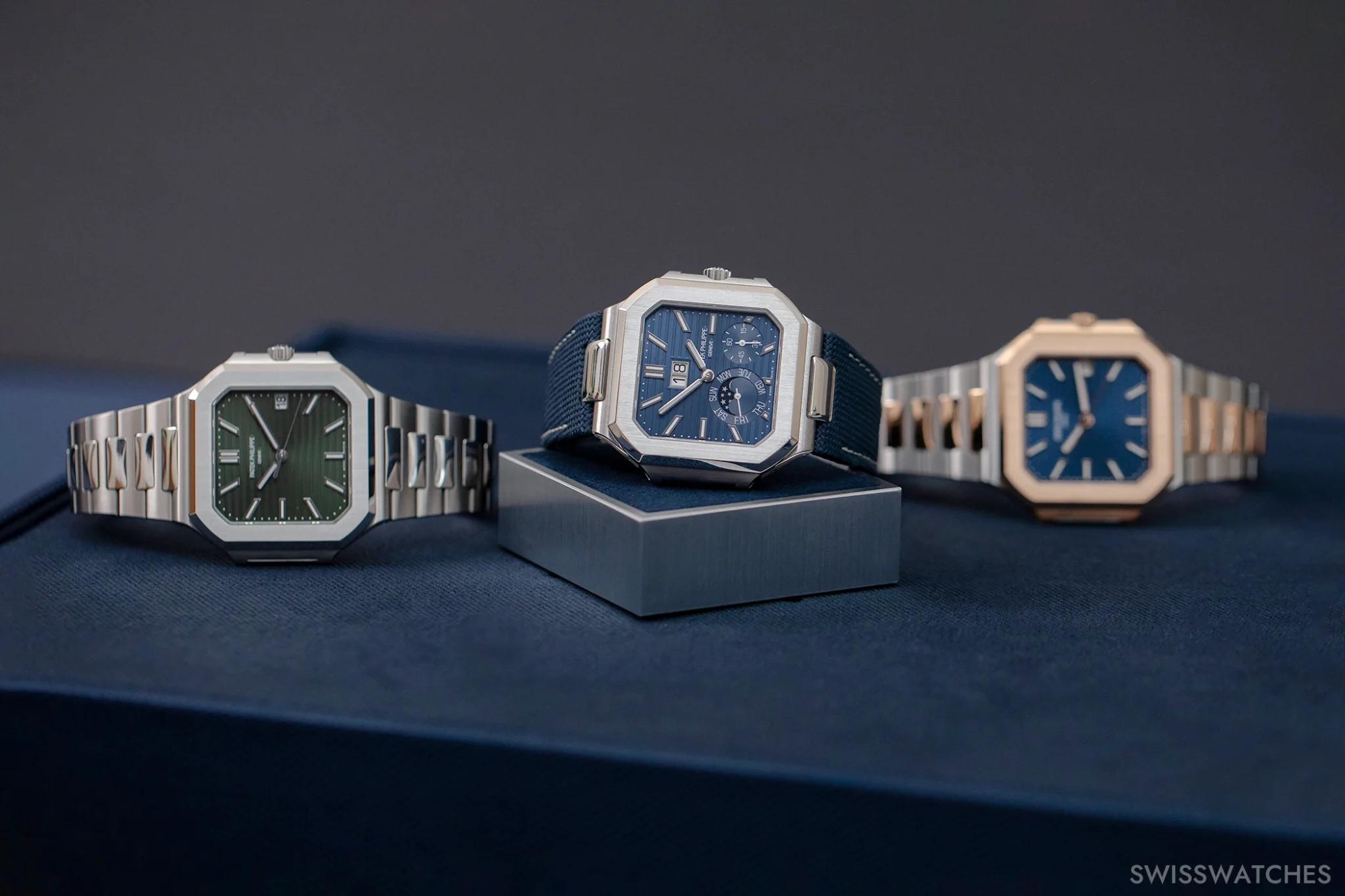
This has now been confirmed in Geneva: the two new variants are characterised above all by their daintier dimensions: The diameter has shrunk from 45 to 40 mm, making the two watches wearable for pretty much anyone and everyone. It should be noted, however, that the 45-mm Cubitus already appeared smaller than its sheer height would suggest, and the 40-mm version is no different.
The fundamental difference to its larger siblings is the fact that the mini Cubitus will only be available in precious metal, at least for the time being: in rose gold with the brown dial as is familiar and adored by Nautilus fans, and in white gold in blue-grey – also a colour that can currently be found similarly in other models, especially in the Aquanaut collection. The price for both versions is identical: 75,320 euros.
All in all, these two interpretations are extremely consistent: they show that the Cubitus design also works in other dimensions. The familial proximity to the other luxury sports models is not concealed, but emphasised. It remains to be seen how the collection will continue to grow – and which Grand Complications Patek Philippe has in store for it.
Split seconds with a vintage feel: Reference 5370R
If you still need proof of how much the choice of case material and the colour of the dial can change the character of a watch: here it is. After two white metal versions, the legendary 5370 split-seconds chronograph is now available in rose gold. Instead of a completely black or blue dial, this version focuses on contrasts: the Grand Feu enamel dial is predominantly brown, while the subdial counters and tachymetre scale are beige. Otherwise, everything remains the same: 41 mm in diameter, applied Breguet numerals, powered by calibre CHR 29-535 PS. These are the specifications of a reference that caused ecstasy among collectors when it was launched almost exactly ten years ago. It would actually be an appropriate reaction now, too, if the watch as such were not already so familiar. After all, you don’t even have to write ‘Reverse Panda’, the associations come naturally: this chronograph exudes an aura of bygone, marvellous times.
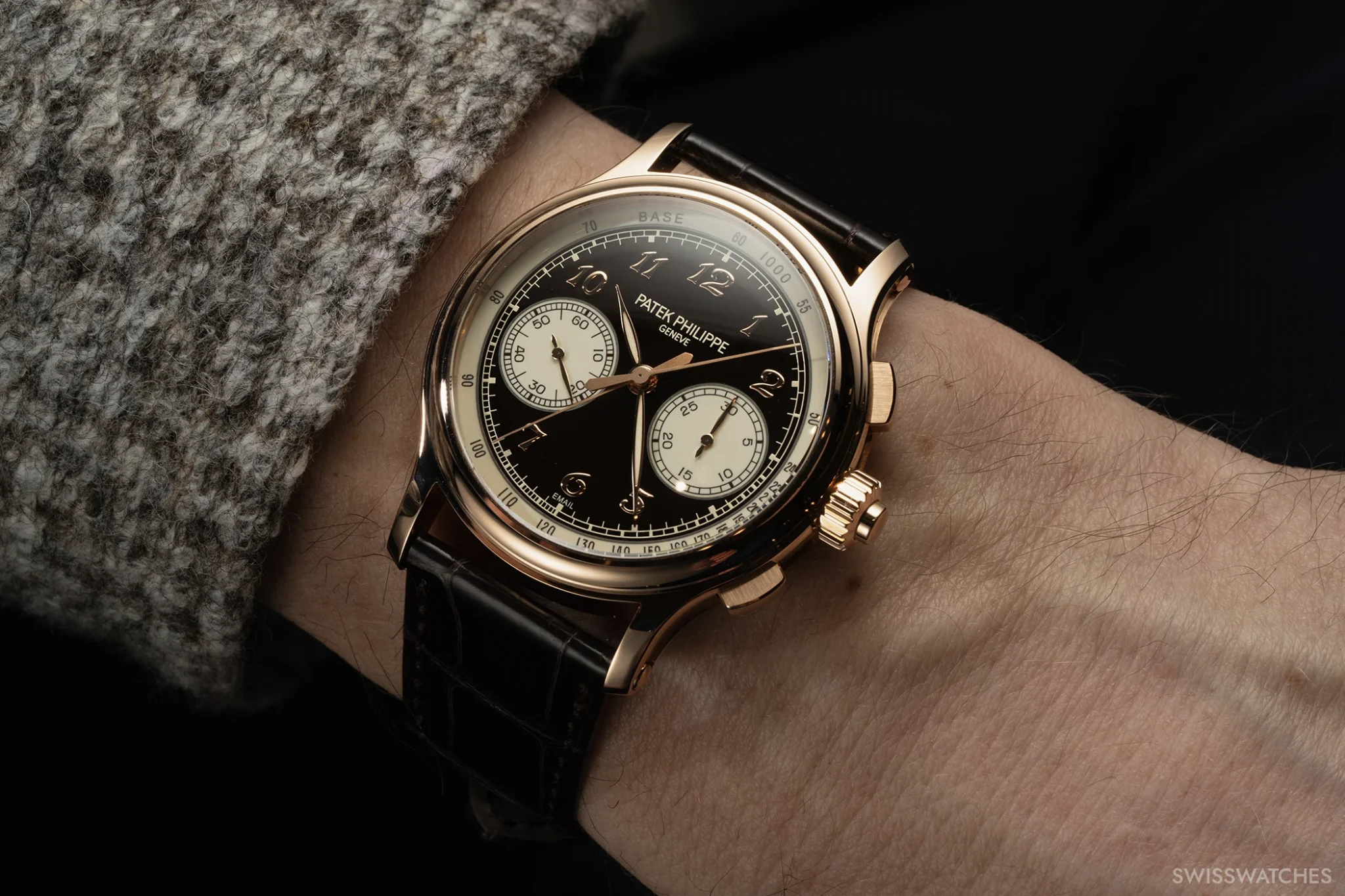
In rose gold, the watch is certainly a lot more eye-catching than its predecessors, and yet somehow sportier, more casual, perhaps also more fashionable in the best sense of the word. The price of 283,900 euros must therefore perhaps simply be seen as an investment in self-optimisation.

The dress watch: Reference 6196P-001
The sales department at Patek Philippe will presumably see things differently, but this one Calatrava is actually enough to make one’s life quite fulfilling in watchmaking terms. After all, since the reference 96 from the 1930s, a simple, round three-hand Calatrava has epitomised the brand.
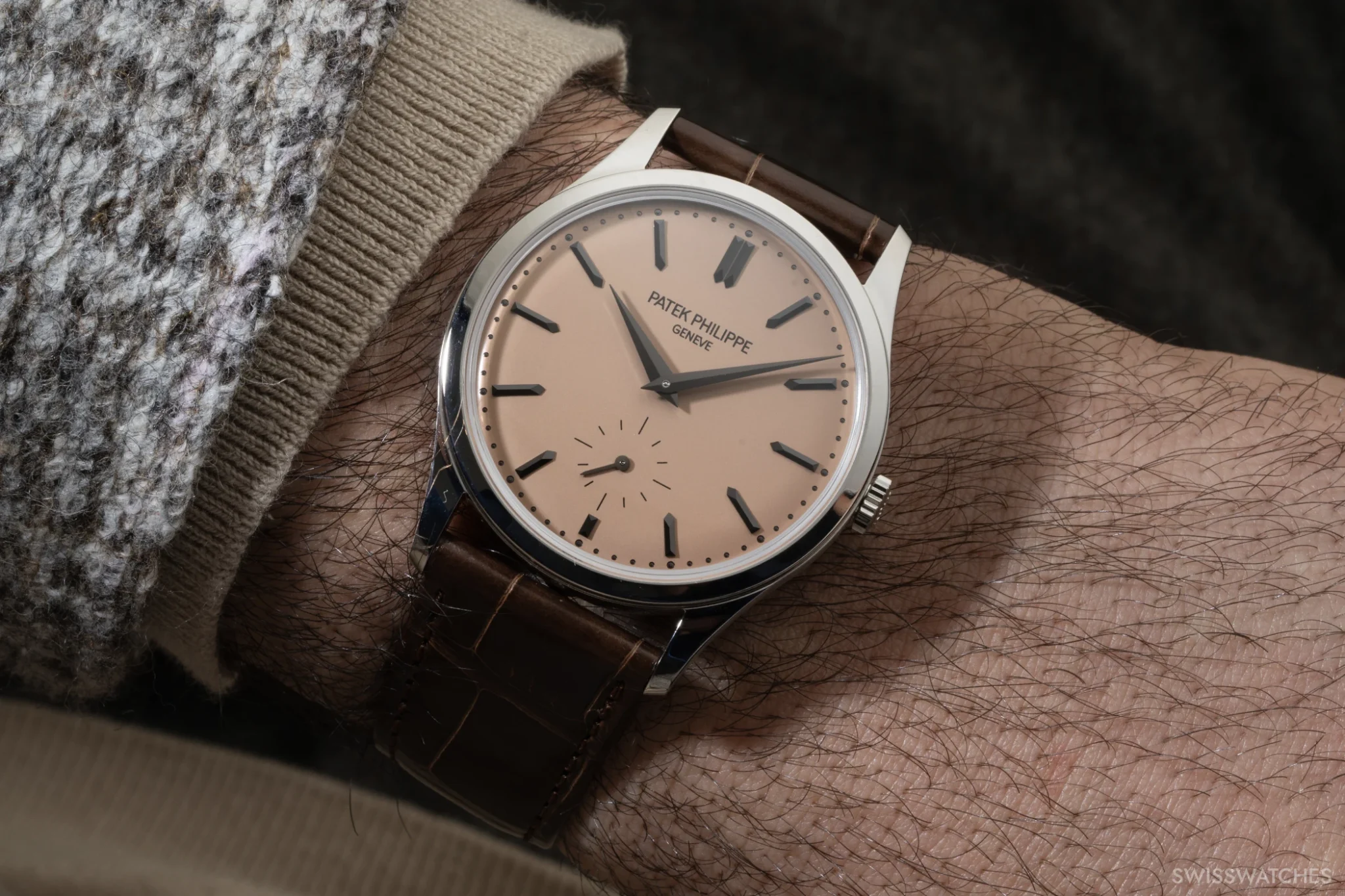
So here is just such a model: the 6196 replaces the reference 5196 and quite simply does many things better than its predecessor. It is something of a quieter highlight among the new launches. With a diameter of 38 mm, it is a shade larger, but has the perfect dress watch dimensions. The ‘rose gold opaline’ dial – Patek Philippe doesn’t like to call it salmon-coloured – combined with the anthracite grey indexes, has a retro look that never looks out of date and will no doubt maintain its appeal forever. The platinum case is so simple, so pure and refined that it perfectly complements the dial. On the back of the watch, the view through the sapphire crystal into the movement is a delight: here, the hand-wound calibre 30-255 PS, familiar from the reference 6119, fills the case perfectly.
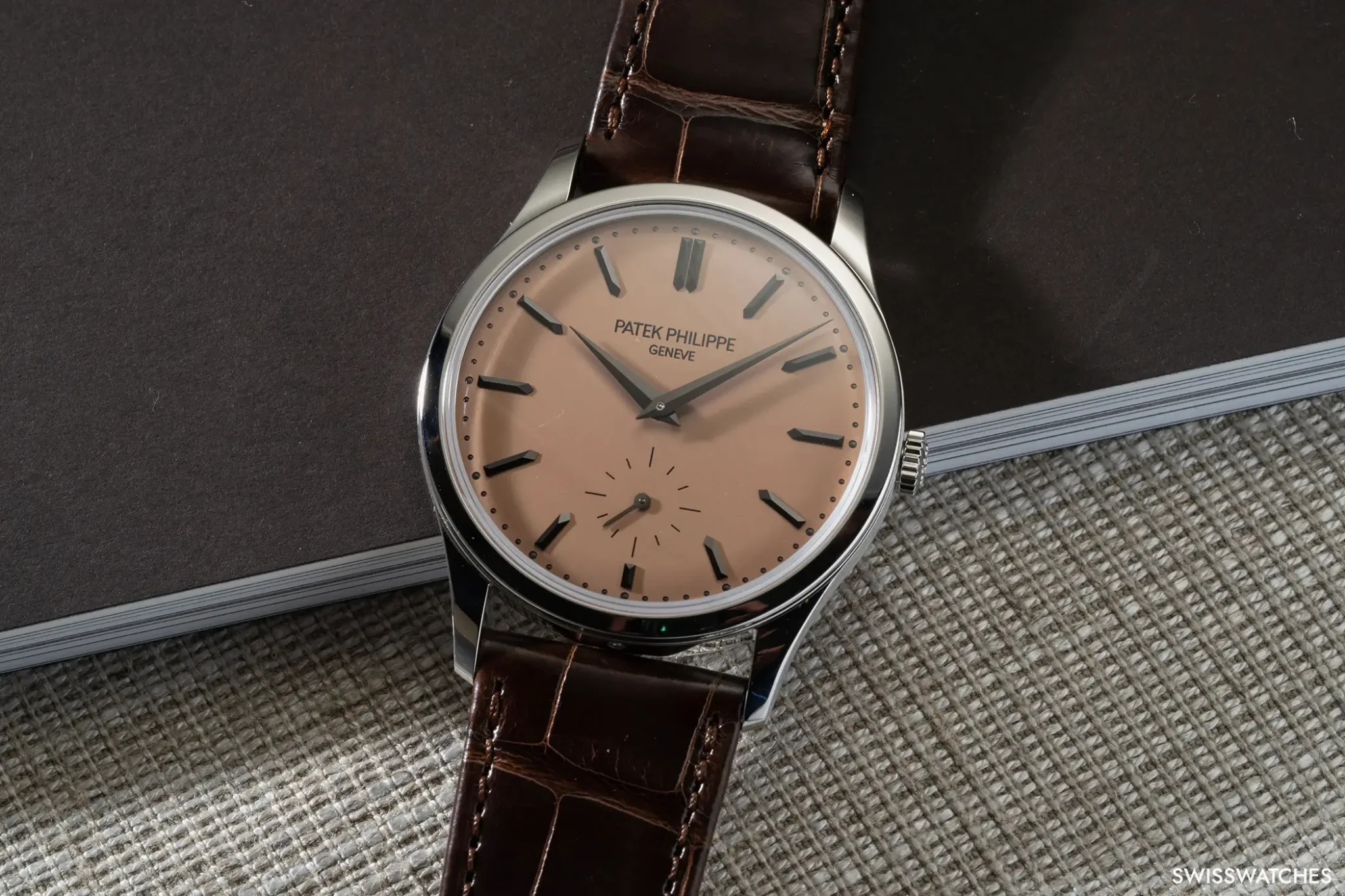
The various components make this classic three-hand watch with the small second at six o’clock a timepiece that would have been called a ‘good watch’ or ‘suit watch’ in the past. And of course, the 6196 would ennoble any bespoke suit. At the same time, its understated elegance makes it quite universally applicable. Want to call it a ‘jeans & T-shirt’ watch? Why not! Its price: 46,350 euros.
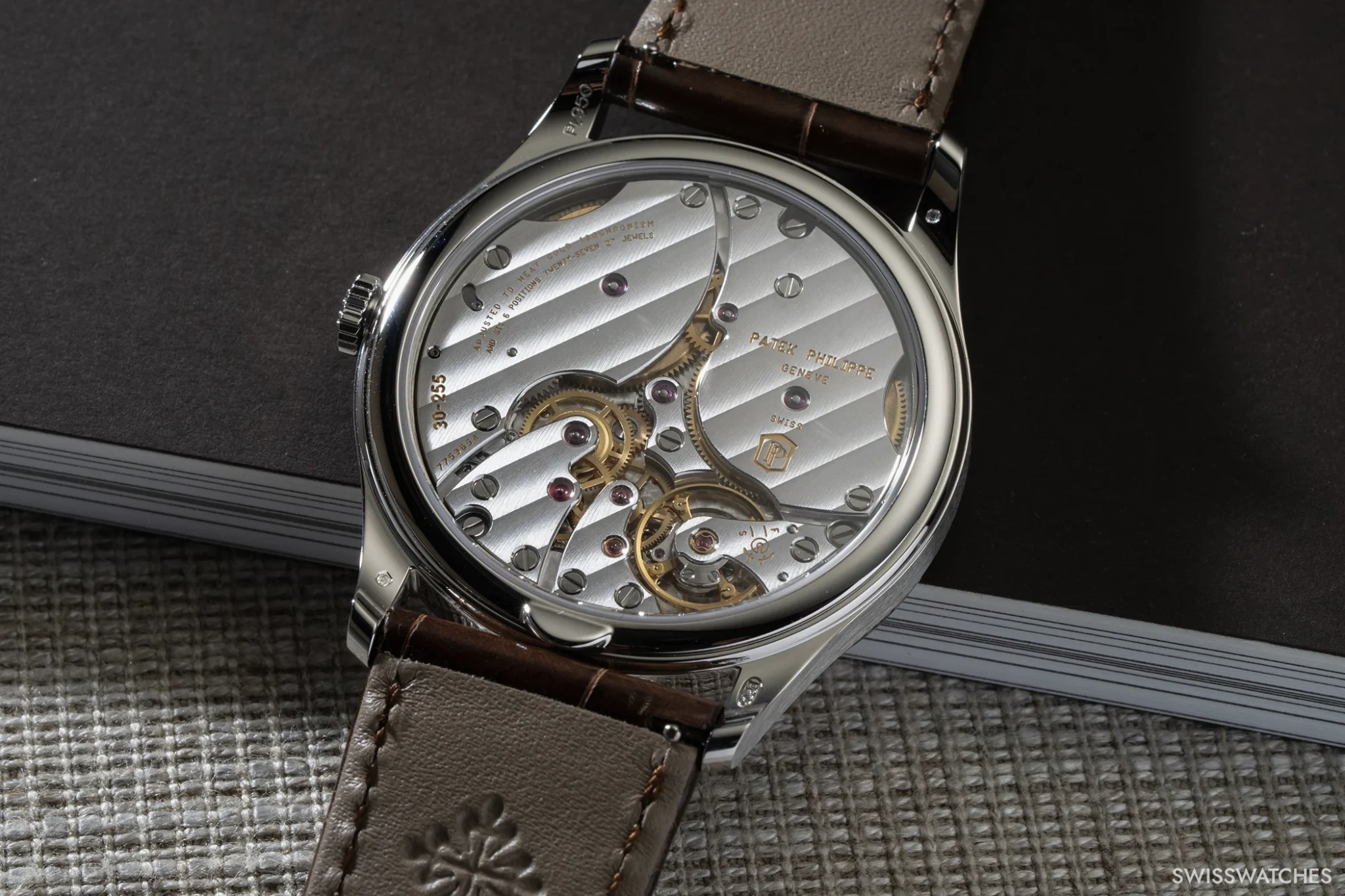
Twenty-4: Reference 7340/1R-010 and 7340/1R-001
Two rose-gold perpetual calendars strengthen the ladies’ collection and demonstrate the demand for complicated watches in this segment. The reference is optionally available with a classic olive green dial with a sunray finish, or as a lighter, silver-grey version with a vertical and horizontal satin finish: this creates a structure reminiscent of linen. Collectors are already familiar with the so-called ‘Shantung’ finish from the annual calendar reference 4947, which is now joined by the equally new reference 4946R-001 with a brown dial. The two new models are available to concessionaires at a price of 118,200 euros.
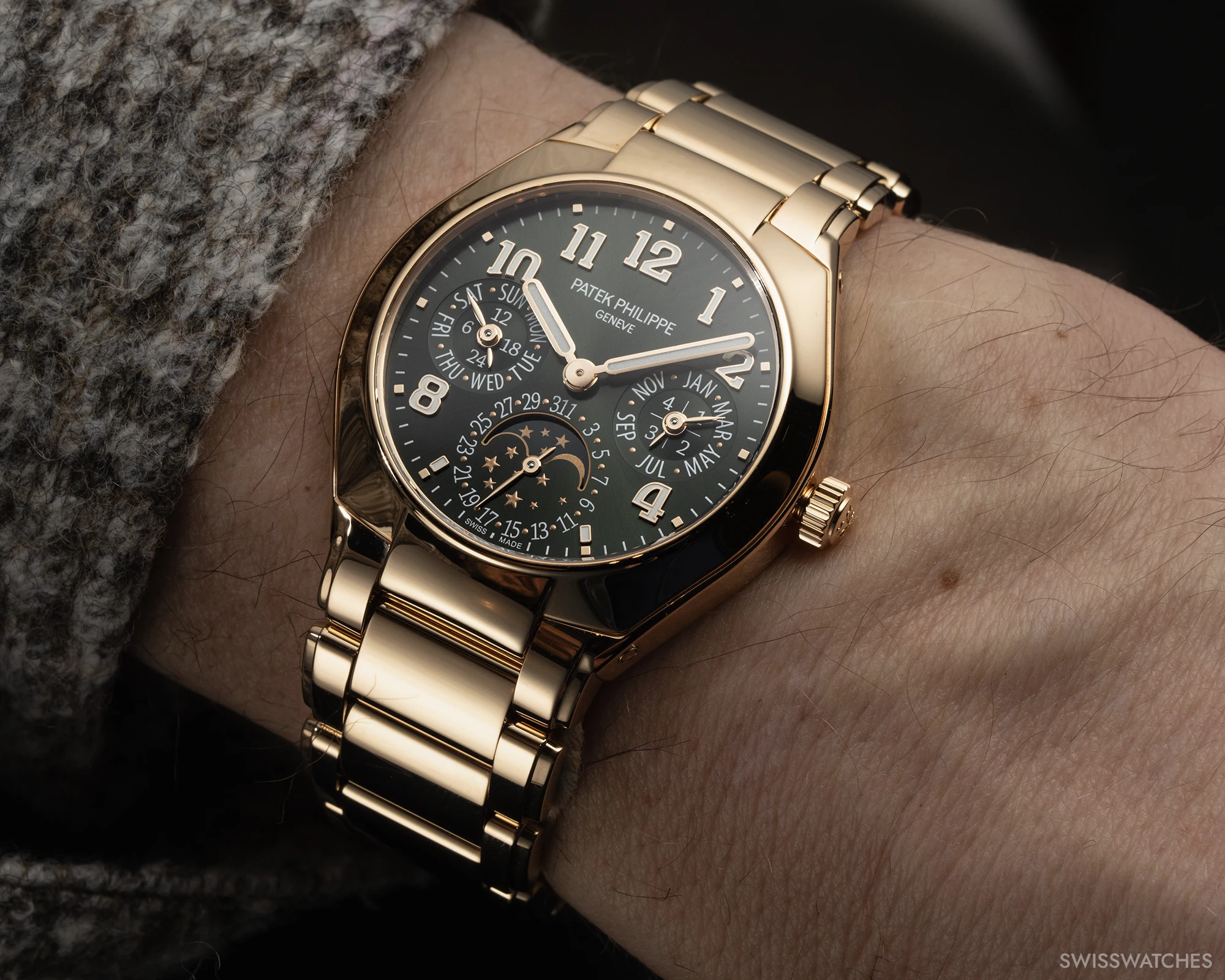
For private jet pilots? The Reference 5524G Calatrava Pilot Travel Time
And another familiar model with a new look: the Calatrava Pilot Travel Time, with its ivory-coloured dial, appears significantly fresher and more summery than the previously known versions with brown or blue dials.
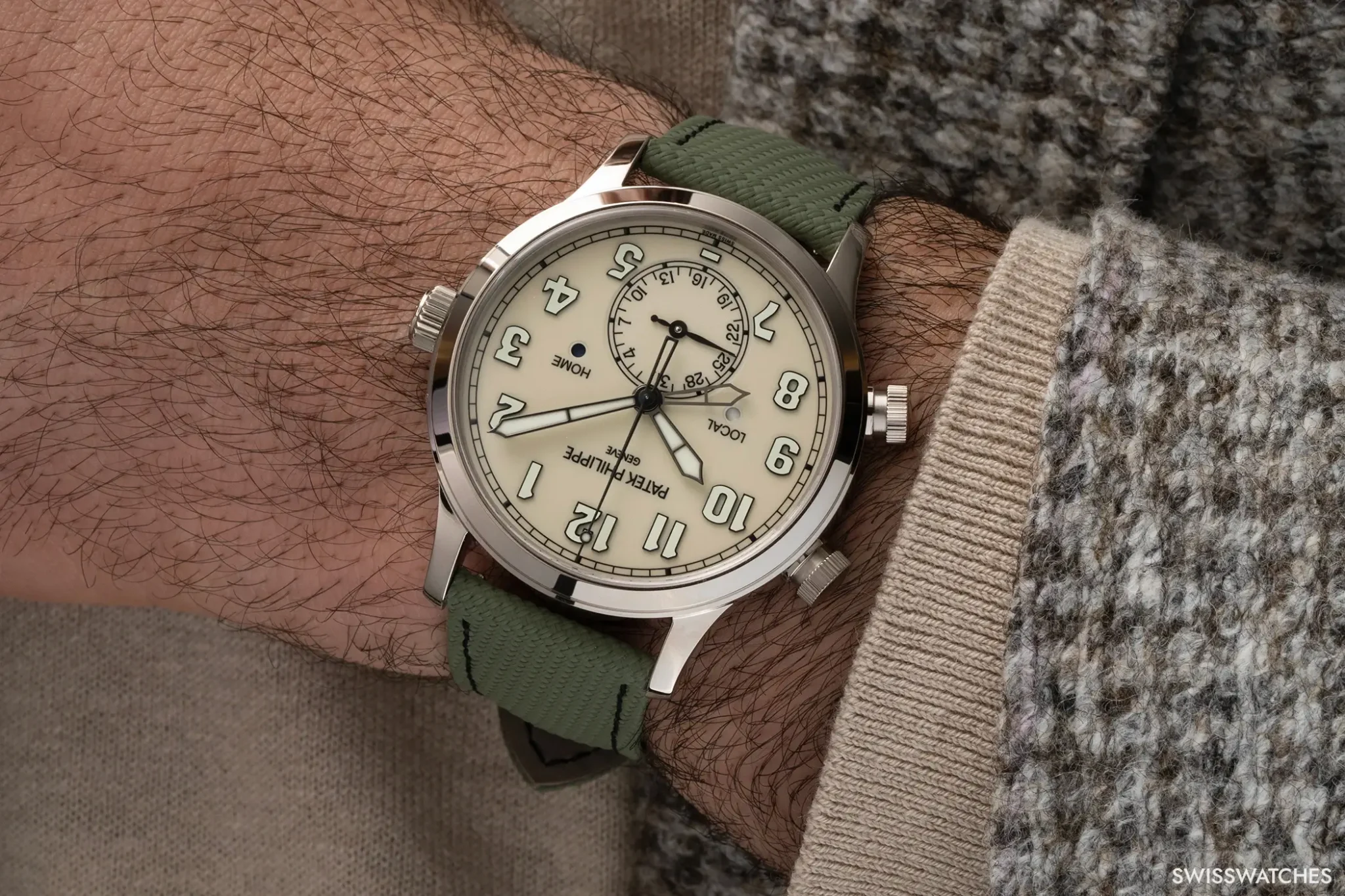
Within the Patek Philippe collection, the reference with its two large pushers at eight and ten o’clock occupies a rather niche role. Will this change with the new colour scheme? Patek Philippe undoubtedly masters the travel time function in significantly less conspicuous versions, whether in the Aquanaut or within the Calatrava collection. But that, too, is part of the charm of the manufacture: not everything has to appeal to all fans of the brand – there are too many different worlds within the Patek Philippe cosmos for that.

2025: A Strong Line-Up
The Stern family company has earned its place at the forefront of horology over the centuries. The diversity of this year’s new releases should therefore hardly come as a surprise, but with their diverse colours, nuances, and sophistication, they illustrate the roots of the company’s success. At Patek Philippe, the collection is cultivated with a special blend: a sense of proportion meets continuity, history meets innovation, boldness meets caution.

Of course, the collection under Thierry Stern is different from that in the days of his father Philippe. Times may change, but the fundamental spirit and corporate philosophy remain unchanged. What was presented this year in its entirety is perhaps one thing above all: a symbol of inner peace and the pursuit of excellence and exceptional class in very diverse forms of expression.

